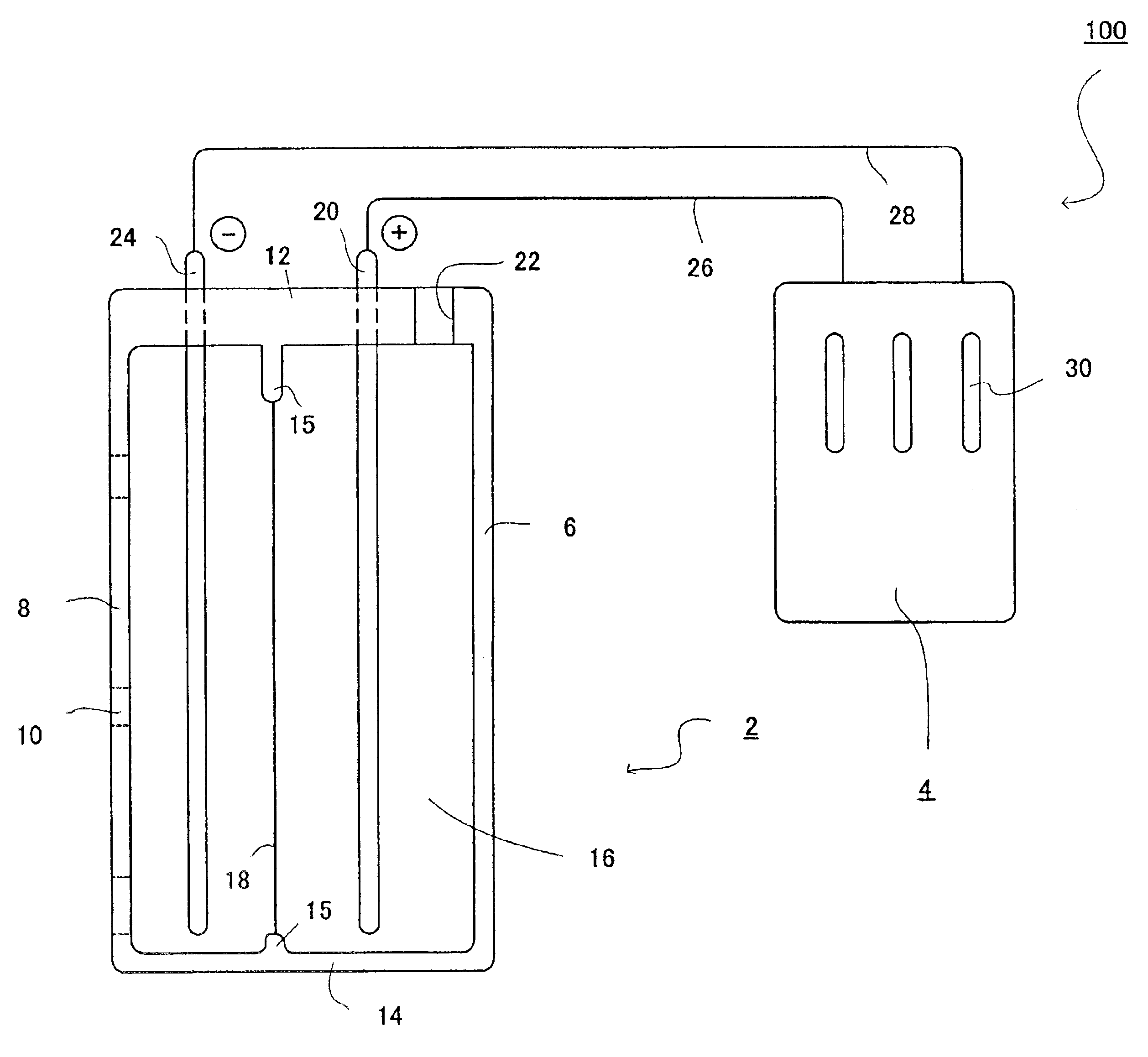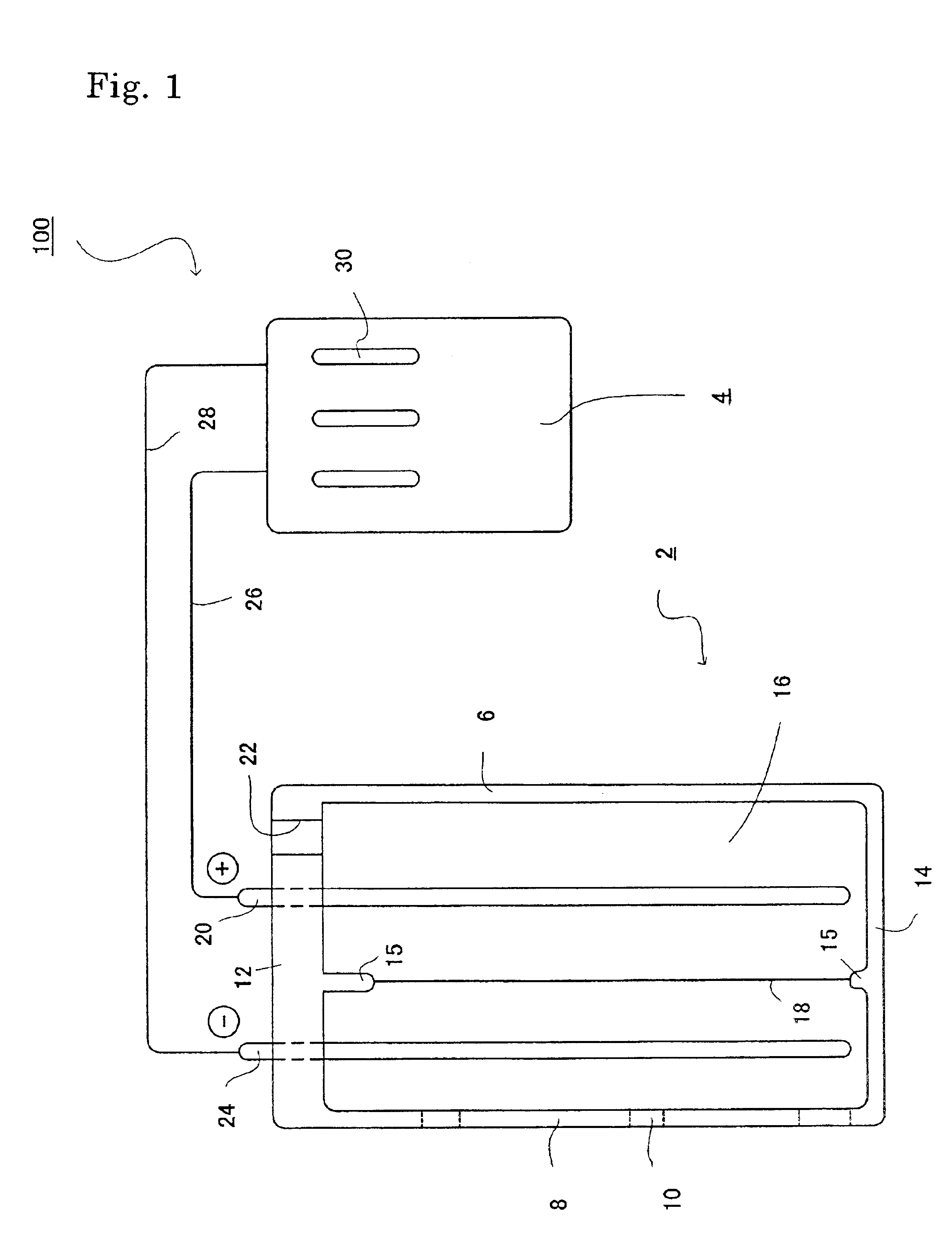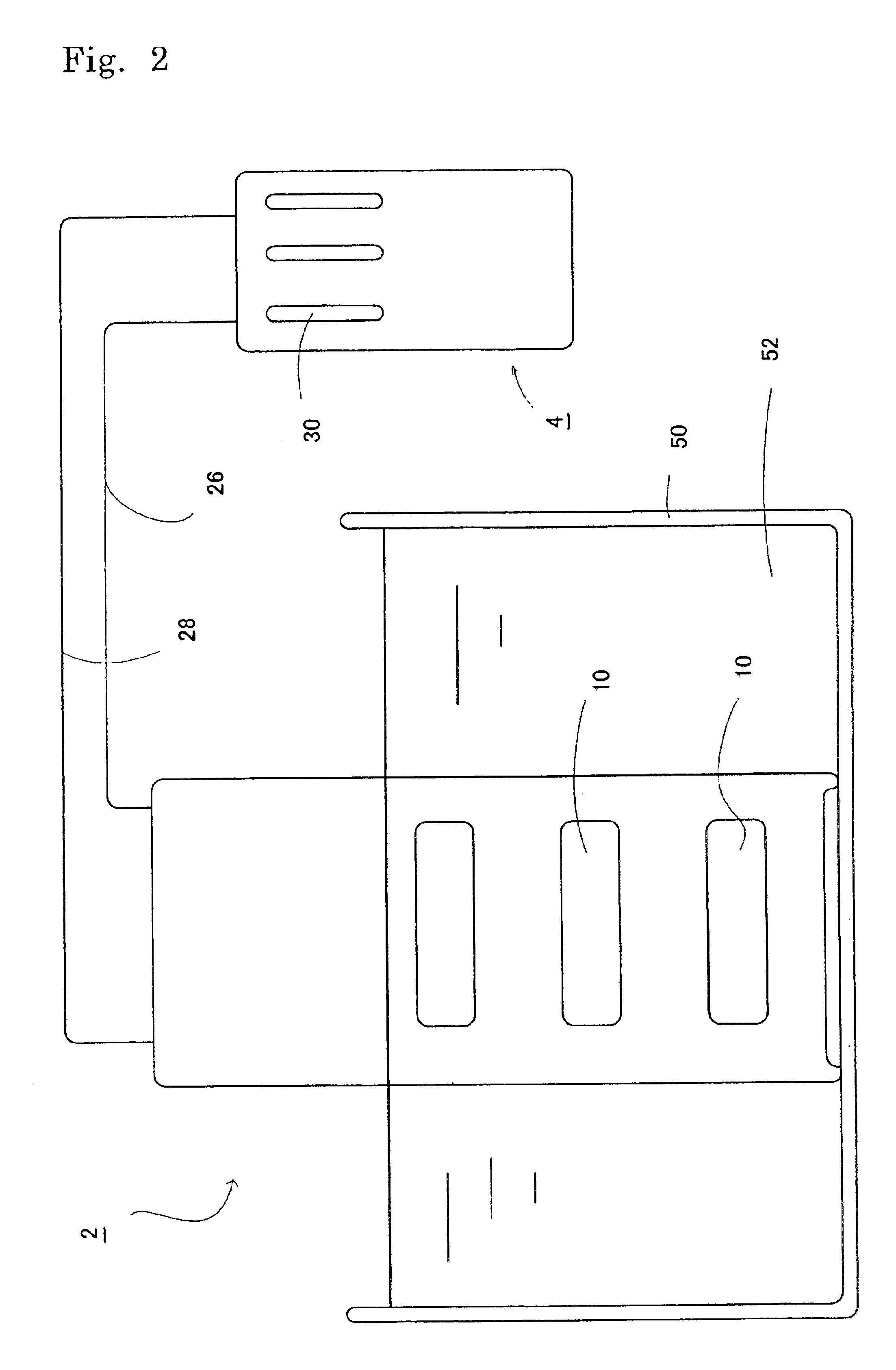Device for producing electrolytic water and process for producing electrolytic water
a technology electrolysis, which is applied in the direction of electrolysis organic production, electric circuits, manufacturing tools, etc., can solve the problem that the device for producing electrolytic water does not necessarily meet individual needs
- Summary
- Abstract
- Description
- Claims
- Application Information
AI Technical Summary
Problems solved by technology
Method used
Image
Examples
example 1
Electrolytic water was produced using the device for producing electrolytic water in FIG. 1 as shown in FIG. 2. In the device, the dimensions of the anode chamber are 10×5×4 cm3 and each of the septum, the cathode and the anode had a size of 10×5 cm2. The cathode and the anode were made of platinum and the septum was a cation-exchange film (Asahi Glass Co., Ltd., Trade Name: Arsansep).
In the anode chamber was placed 200 mL of 0.1 M sodium chloride. The electrode unit 2 was immersed in one liter of water (raw water) containing 2 mM sodium chloride, and then electrolysis was conducted at a DC current of 0.31 A and a voltage of 8 V for 30 sec. Table 1 shows a pH value, an oxidation-reduction potential (ORP) and a dissolved oxygen level (DO) for the cathodic electrolytic water.
TABLE 1pHORP (mV)DO (mg / L)Raw water5.514486.61After 30 sec9.212507.34electrolysis
example 2
Using the same device as Example 1, cathodic electrolytic water was produced as described in Example 1, except that an electrolysis time was 1 min. The properties of the water are shown in Table 2.
TABLE 2pHORP (mV)DO (mg / L)Raw water5.514486.60After 60 sec10.54347.01electrolysis
example 3
Using the same device as Example 1, cathodic electrolytic water was produced as described in Example 1, except that an electrolysis time was 2 min. The properties of the water are shown in Table 3.
TABLE 3pHORP (mV)DO (mg / L)Raw water5.514486.60After 120 sec11.51−4576.36electrolysis
FIG. 3 is a graph showing relationship between an electrolysis 15 time and an ORP for a cathodic electrolytic water obtained in the above examples while FIG. 4 is a graph showing relationship between an electrolysis time and a pH value for a cathodic electrolytic water.
PUM
| Property | Measurement | Unit |
|---|---|---|
| Molar density | aaaaa | aaaaa |
| Molar density | aaaaa | aaaaa |
| Time | aaaaa | aaaaa |
Abstract
Description
Claims
Application Information
 Login to view more
Login to view more - R&D Engineer
- R&D Manager
- IP Professional
- Industry Leading Data Capabilities
- Powerful AI technology
- Patent DNA Extraction
Browse by: Latest US Patents, China's latest patents, Technical Efficacy Thesaurus, Application Domain, Technology Topic.
© 2024 PatSnap. All rights reserved.Legal|Privacy policy|Modern Slavery Act Transparency Statement|Sitemap



